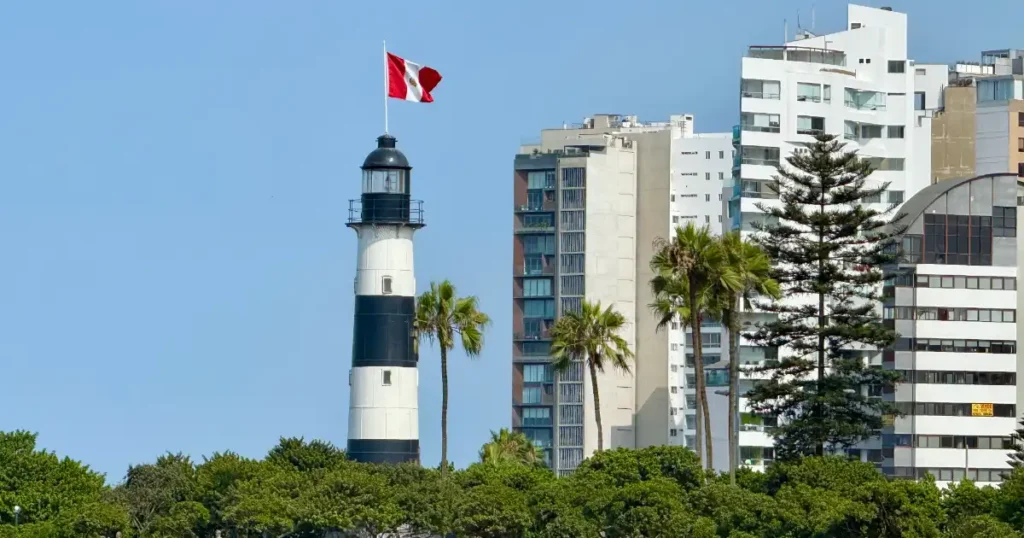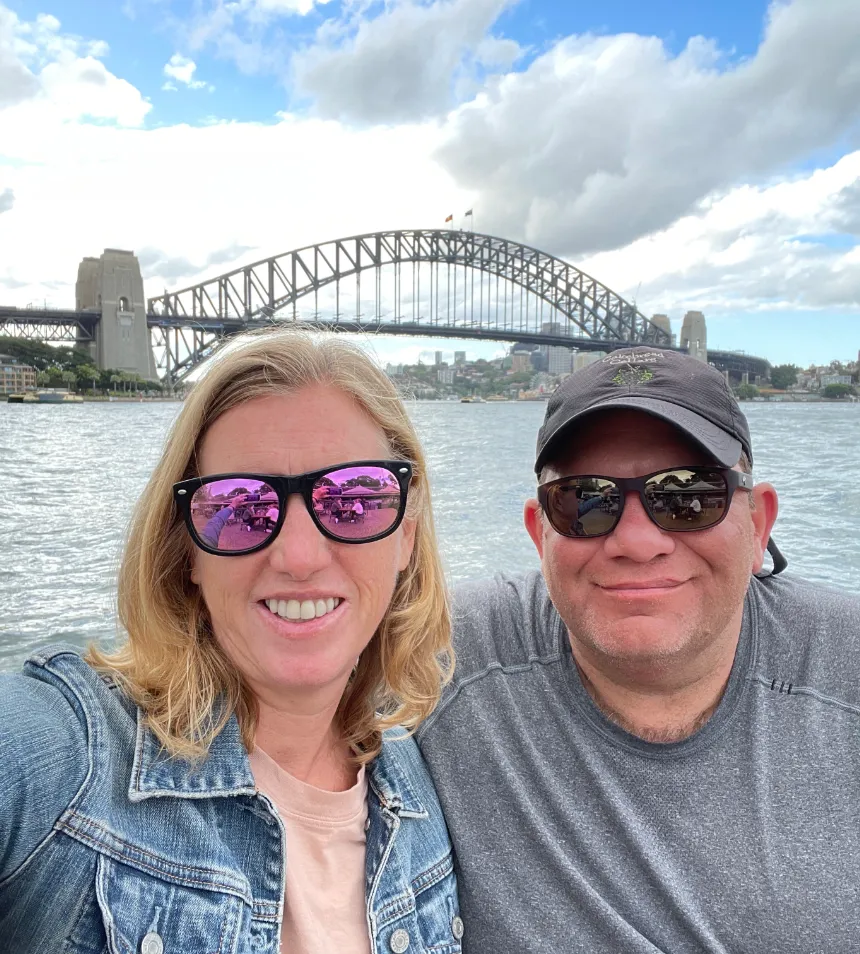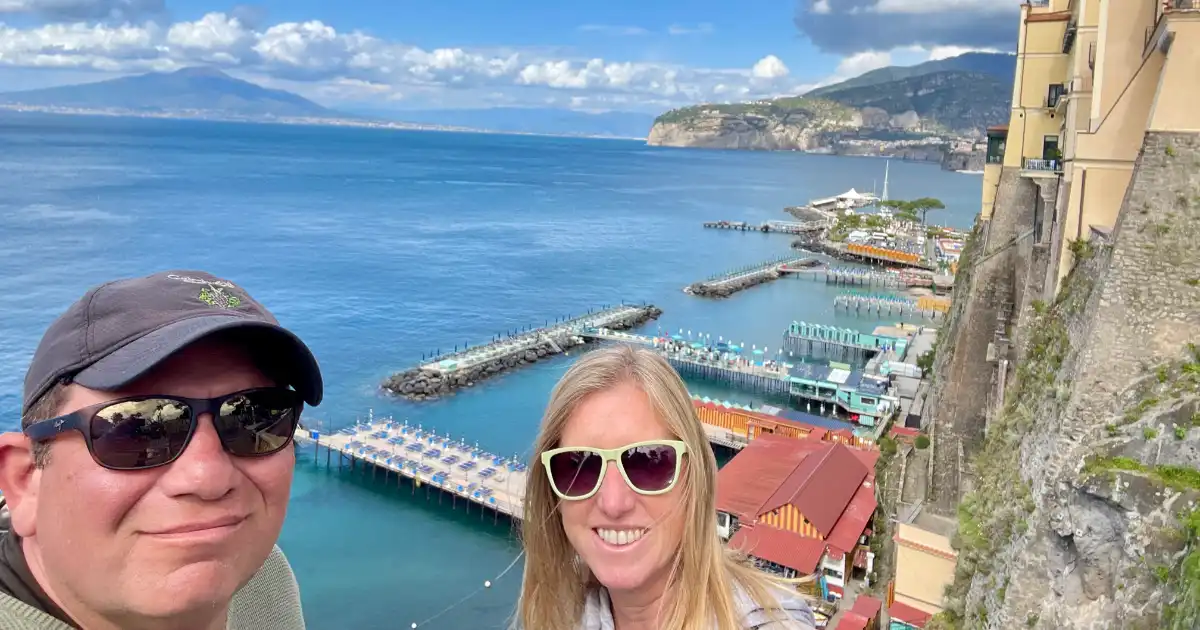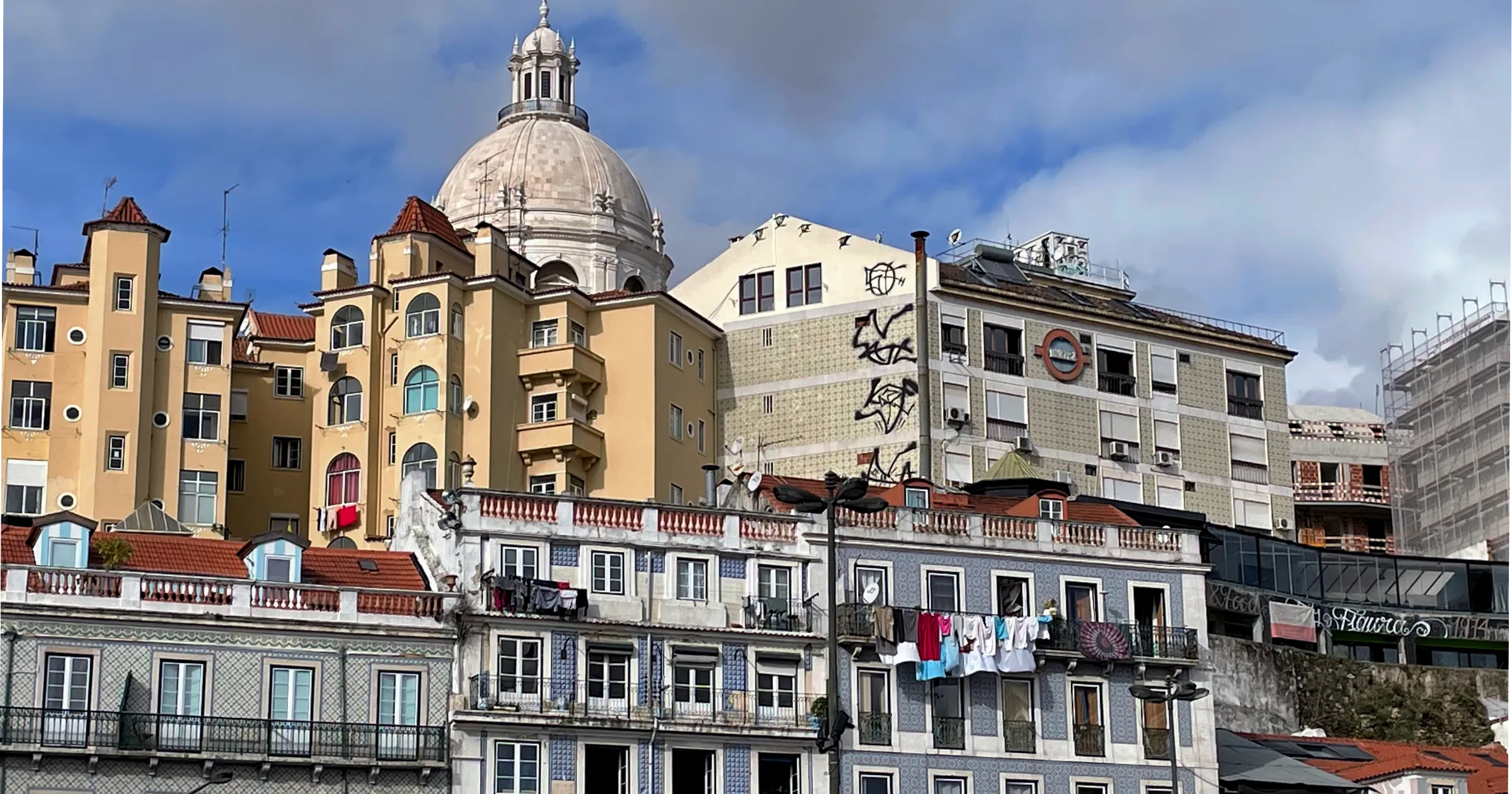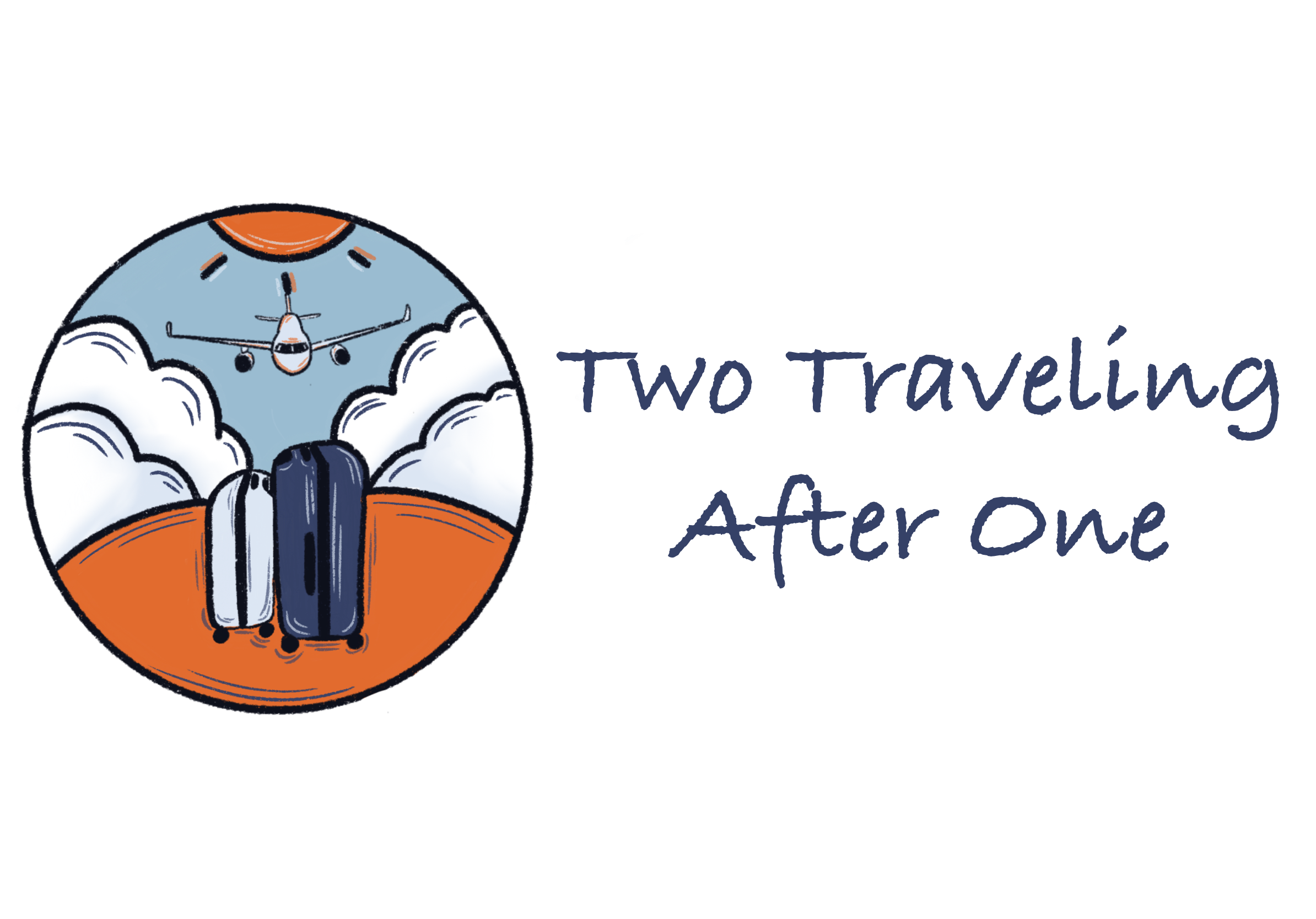One Month in Lima, Peru: A Slow Travel Budget Breakdown for Nomad Travelers
Consider spending a month in Lima, Peru, as part of your slow travel journey. Whether you’re an empty nester, a retiree, or simply dreaming of affordable international living, Lima offers a vibrant mix of history, cuisine, coastal beauty, and culture. Here’s what a month-long Lima, Peru, Nomad Travel cost us as full-time nomads, along with tips for making the most of your stay.
Lima, Peru. A city perched on the cliffs of the Pacific Ocean, where modern life flows around ancient ruins, and dinner might start at 9 PM and end with a churro from a street cart.
We just spent a month slow-traveling this incredible city, and in this blog post, we share everything, what we did, where we ate, and exactly what it cost to live in Lima for a month.
We’ll show you the neighborhoods we explored, the surprising history behind its pre-Inca pyramids, the most iconic street foods, and the world-class restaurants that made our stay unforgettable.
You’ll get a full breakdown of our expenses, from accommodations and groceries to transportation, health care, Wi-Fi, and entertainment. We’ll also walk you through our day-by-day itinerary with real-life examples, including Map links to all the places we visited and tips to help you plan your trip to Lima.
If you’re a slow traveler, a senior nomad, or just someone wondering what it’s like to spend a month in Peru’s capital city, this video is for you.
So, grab a coffee or a Chicha Morada, and enjoy. Here’s what it’s like to travel slowly to Lima
Table of Contents
QUICK NOTE: This post contains affiliate links and Two Traveling After One may receive a commission for purchases made through these links, at no extra cost to you.
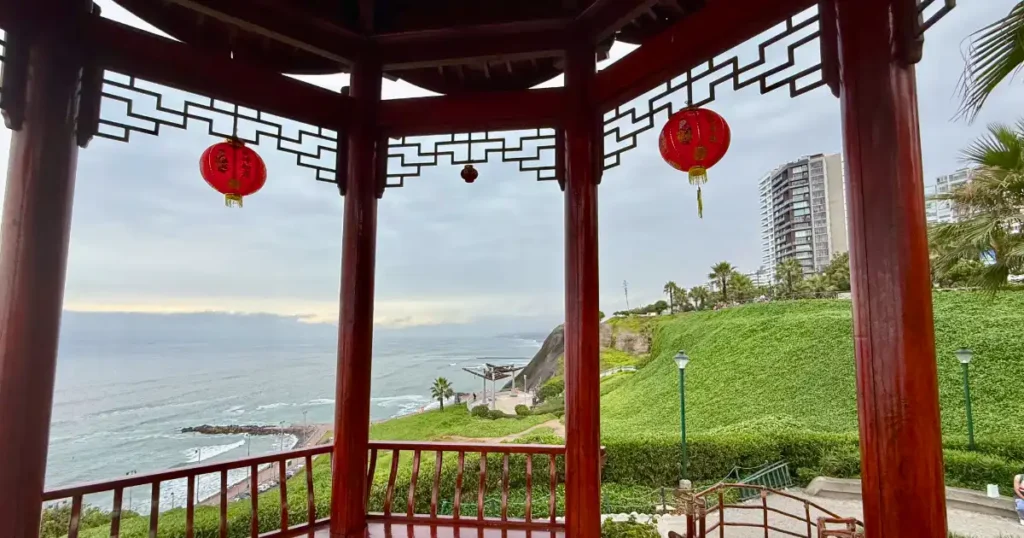
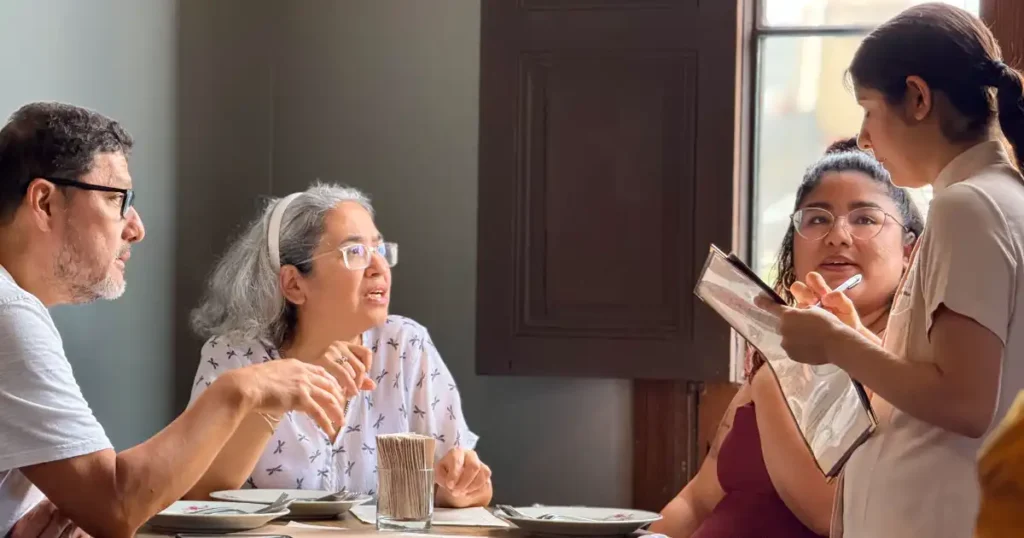
Money and Paying For Things
Let’s start with money, how to get it, how to pay, and what worked best for us during our month in Lima.
We found that most restaurants, shops, cafés, and even some street vendors in Lima accept cards. Apple Pay worked smoothly in many places, and we rarely had trouble using our U.S. credit cards. However, there are still moments when cash is necessary, especially for food carts, markets, and small convenience purchases.
We used Uber from the airport, and we’ll talk more about transportation later, but it’s worth noting right up front: when you exit Lima’s airport, you’ll immediately be approached by taxi drivers. It can feel a bit intense. Uber pickup is easy to use and is across the street from the terminal exit in the parking lot.
On our first full day in Lima, we withdrew 400 soles from an ATM, totaling USD 114, including fees. We used a Charles Schwab debit card for ATM withdrawals since it refunds fees and offers reasonable exchange rates. We were refunded $34 in ATM transaction fees throughout the month for the four withdrawals we made, around $8.50 per withdrawal.
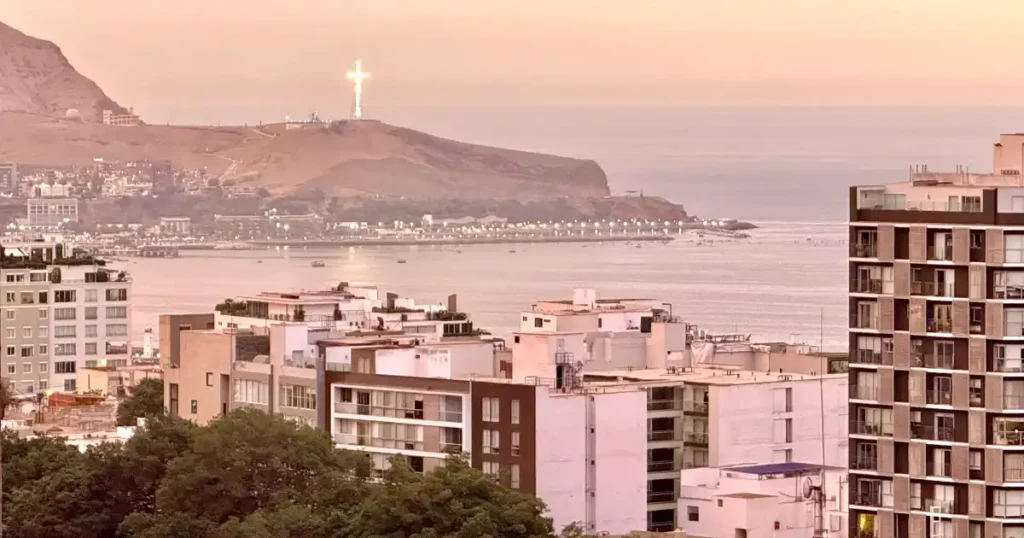
Where We Stayed
For our month in Lima, we booked a high-rise apartment on the 18th floor of a beautiful, modern building on the border between Miraflores and Barranco. It was the perfect base, close to grocery stores, restaurants, the Metropolitano bus line, and the Lima Bikes station where we got our monthly subscription.
The building had 24-hour security, a staffed lobby, and amenities that made it feel like a full-service hotel. There was a pool, jacuzzi, gym, billiards room, laundry facilities, and parking, though we didn’t need a car. The internet was fast, and the apartment had everything we could need.
Inside, it was modern, clean, and comfortable. The kitchen was exceptionally well equipped, much more than the basics, with all the tools you’d need to cook at home. There was a dedicated desk for working, plenty of storage, and the bed, while just a double, was comfortable. The bathroom was modern, the water pressure was great, and we had hot water with no issues.
The total cost for 31 nights was $987.13, including what we spent on laundry, about $3 per load. The building didn’t offer cleaning service, but they did offer to change the sheets. We washed them ourselves and appreciated that the host left us an extra set.
The apartment didn’t have AC or heat, but we didn’t miss it. Days were warm, nights were cool, and we stayed comfortable with a ceiling fan in the bedroom and an oscillating fan in the living room.
There were a fair number of short-term rentals in the building, which meant a bit of a transient feel at times. But overall, the experience was excellent, and the sunset views from the 18th floor were stunning.
For the price and the location, this was a fantastic place to stay for a month in Lima, and we’d recommend it.
Check out our full YouTube video for more insights and visuals from our month in Lima, Peru
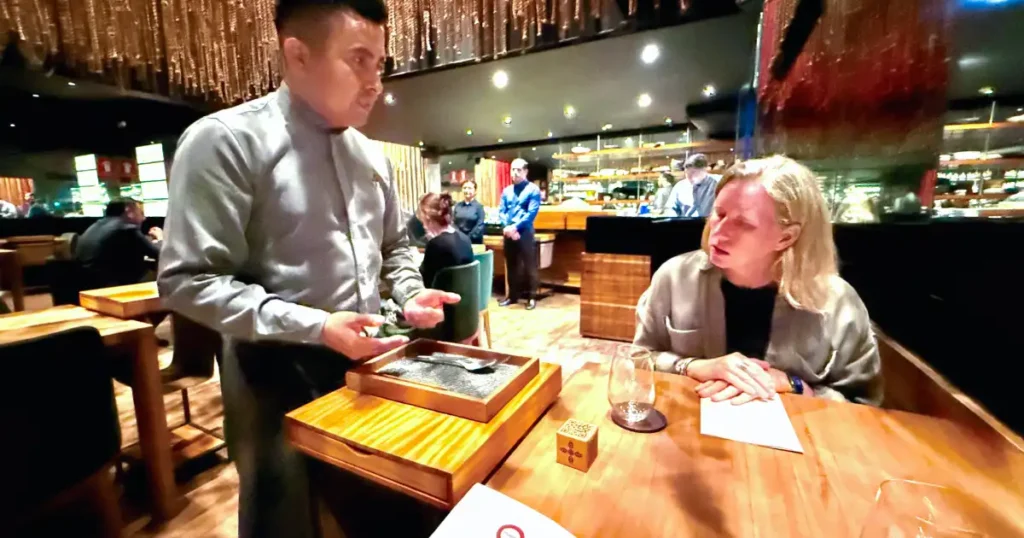
Eating Out in Lima
Lima is one of the world’s top food cities, and we made the most of it.
We spent $2,822.86 on eating out this month, and yes, we went big. That total includes $2,100 on three unforgettable meals, which were part of our ongoing mission to eat at all of the restaurants on the World’s 50 Best Restaurants list.
We started with a nine-course tasting menu at Kjolle, a stunning space that shares a campus with Central and Mater. The setting was clean and modern, and each course featured beautifully curated ingredients and thoughtful presentations.
Then we tried Mayta, where we had a 10-course tasting menu in a beautifully designed space with creative dishes grounded in Peruvian tradition.
Finally, we ate at Maido, a renowned Nikkei restaurant that blends Japanese and Peruvian cuisines. From the first bite to the last dessert, it was clear why this place is ranked the best restaurant in the world for 2025.
But Lima’s food scene isn’t just about fine dining.
One of our favorite everyday spots was Isolina in Barranco, where we had bold ceviche with fried octopus, layered causa, and a flan at the top of our dessert list.
We also got hooked on street food, especially Picarones Mary, where we kept returning for piping hot Picarones donuts and fresh chicha morada.
Another treat we couldn’t resist was freezer pops, sold everywhere by street vendors.
We encountered a vendor selling tequeños, fried dough sticks filled with cheese, at the magical fountains.
We also joined a food tour to the central market and Chinatown, where we sampled ceviche, fava beans with sauces, red bean pastries, and a unique churro with three filling options.
Other favorite meals included dinner at Reiwa Izakaya, which served some of the most interesting gyoza we’ve ever had, and lunch at Gran Chifa Chung Yion, which serves Chinese-Peruvian comfort food. Buena Vista Café served up club sandwiches and milkshakes with ocean breezes on the side for a relaxed lunch with a view.
From carts and cafés to some of the most acclaimed restaurants in the world, eating in Lima was not just a highlight; it was a full-on experience. And while it made up a big part of our budget, we have no regrets.
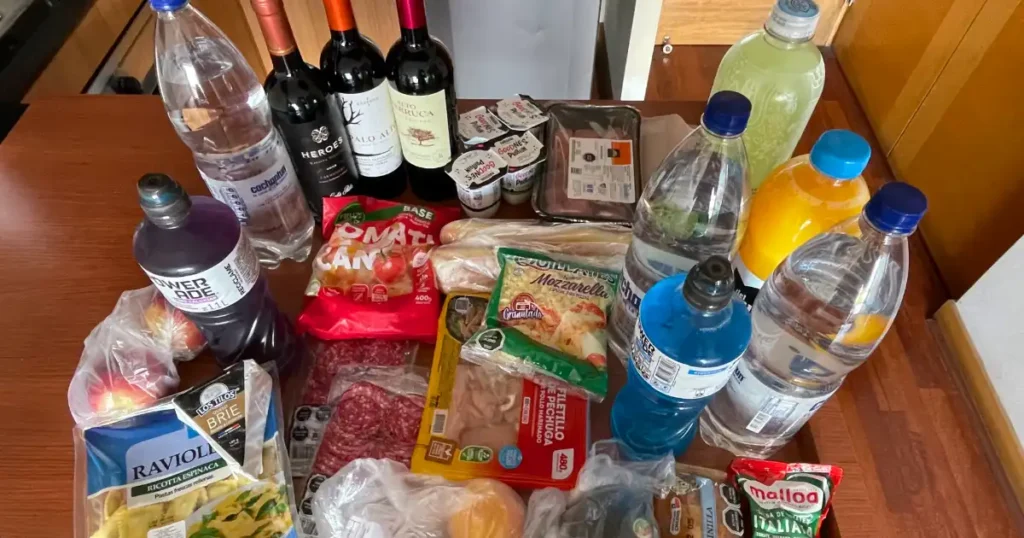
Groceries
To balance out our splurges at Lima’s top restaurants, we consciously tried to cook at home and spent $540.54 on groceries over the month.
That covered staples like bottled water, wine, snacks, and enough ingredients to make several dinners each week. Our apartment’s well-equipped kitchen made it easy to prepare simple meals, especially when we wanted a night in or just needed a break from dining out.
We had two grocery stores within walking distance, making shopping convenient. One of our favorite tips when traveling long-term is to bring packable grocery bags. We use them constantly; they are handy here since we walk everywhere.
We also visited a local market, where we picked up fresh bread, meats, plantain chips, and chocolate spread, among other things. It’s always a good idea to support local vendors, try new products, and better understand a place’s food culture.
The groceries here were reasonably priced, especially for produce, and there was no shortage of quality options. We could find almost everything we needed, even some familiar brands, and cook comfortably from our apartment when we wanted to stay in.

Health and Wellness
Health and wellness are always a part of long-term travel; sometimes it’s routine, and sometimes a little unexpected.
This month in Lima, we spent $42.24 on health-related expenses. The biggest one came when I needed an antibiotic for an infection. Fortunately, it was a simple process, just a quick consult with a pharmacist, and no prescription or appointment was required. They listened to what was going on, made a recommendation, and I walked out with what I needed. It was fast, affordable, and effective.
We also used the opportunity to restock a few essentials. We picked up more of the mouthwash we’ve been using since Mexico, which was recommended by our dentist there and has been a game-changer for our periodontal health. We grabbed new toothbrushes and another tube of toothpaste, since we’d been squeezing every last drop out of the one we brought.
Many nomads wait until they’re back in the U.S. to restock on personal care items, but we’ve found that many products are more affordable and easier to find abroad. It’s always worth doing a quick price comparison, and when you spot something at a reasonable price, it makes sense to grab it rather than hold out for a Target run months later.
Plus, buying local helps support local families and small businesses. There are plenty of well-stocked pharmacies in Lima, and most have knowledgeable staff who are happy to help, even if there’s a bit of a language barrier. Between routine supplies and getting a quick remedy, taking care of our health here was easy and affordable.
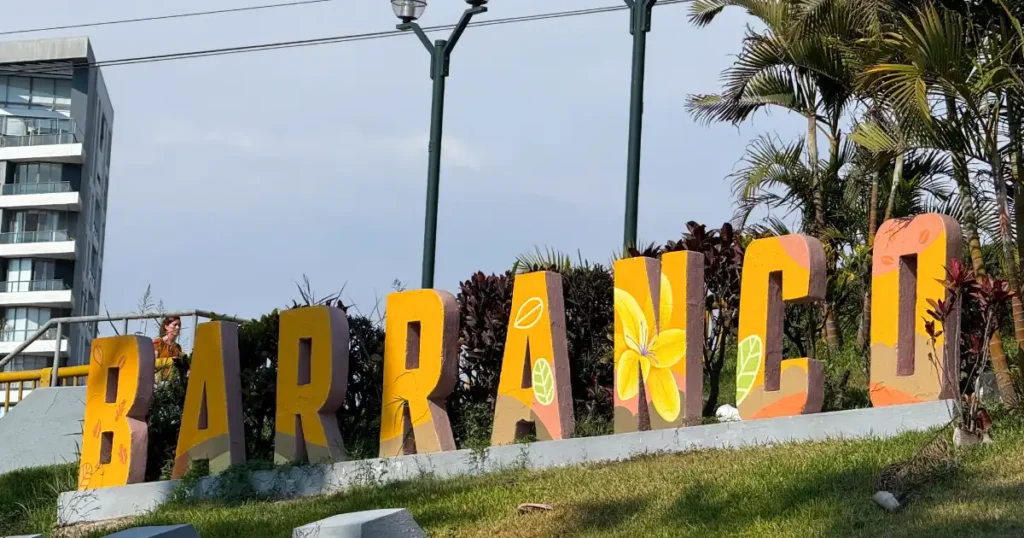
Phone and Wifi
Staying connected while traveling is always a top priority, mainly when relying on maps, translation apps, restaurant reviews, and getting an Uber from the airport.
This month in Lima, we spent $24.50 on connectivity, which covered two eSIM cards from GigSky. Each card came with 5GB of data for 30 days, which was exactly what we needed to stay online without any extra hassle.
We usually price-compare local SIM options when we arrive, but we opted for convenience in this case. While we weren’t sure if Peru offered eSIMs to tourists, we knew that we could only get a physical SIM from Claro in Chile. Rather than gamble with availability or shop around after landing, we went with GigSky, so our phones were ready to go as soon as we touched down.
Our apartment had excellent Wi-Fi speeds. We had no issues with video calls, streaming, uploading content, or handling day-to-day tasks online. Between that and the data from our eSIMs, staying connected in Lima was simple, reliable, and affordable.
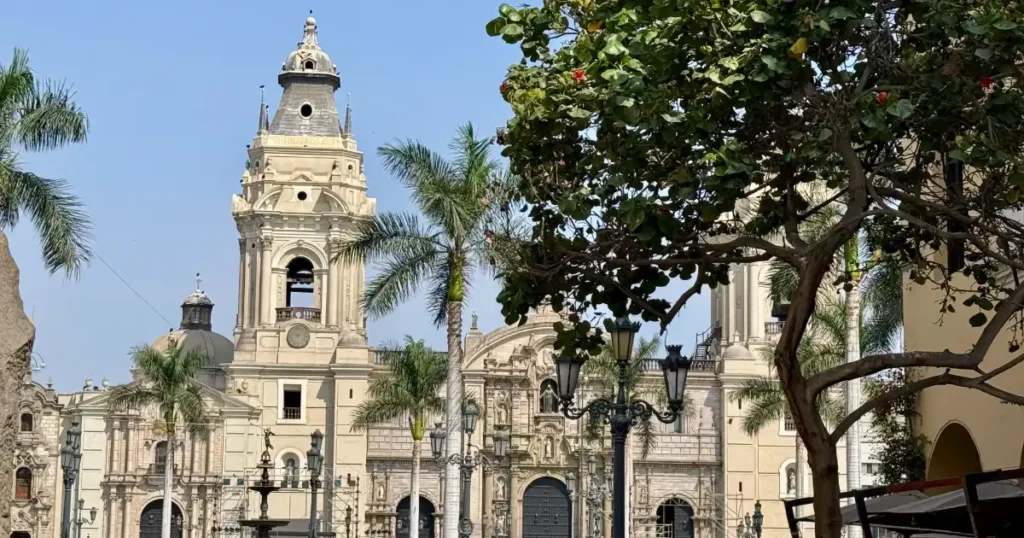
Local Experience, Activities, and Entertainment
Lima offers a surprising amount of free and low-cost entertainment. During our month here, we spent just $47.92 on dedicated entertainment and stayed very busy.
One of our favorite free activities was walking or biking along the malecón—the oceanfront parks and cliffs that run through Miraflores and Barranco. You could spend days here and never get bored. We started at the Marine Lighthouse, one of the best-known landmarks on the cliffs, and continued to Love Park (Parque del Amor), which features a sculpture by Victor Delfin and views that stretch endlessly down the coastline.
We also visited the peaceful Chinese Park, which features a koi pond, meditative music, and ocean views. Further along, the Malecón offered panoramic vistas of the beaches below. On one rare clear day (many Lima days are misty or overcast), we had stunning views down the coast. For the more adventurous, paragliding off the cliffs is also an option.
We often continued our walks or bike rides from these parks to Barranco’s malecón, which is quieter and more residential but full of charm and sea views. We especially enjoyed Malecón de los Ingleses, a small clifftop park with sculptures and beautiful sunset lighting.
Beyond the coastline, we explored Lima’s historic and cultural landmarks. We visited Huaca Pucllana, a restored adobe ceremonial center built by the Lima culture over 1,000 years before the Inca. Admission was 15 soles per person and included a guided tour in English. We also saw Huaca Huallamarca, another ancient adobe pyramid tucked between modern buildings in San Isidro.
One evening, we visited the Circuito Mágico del Agua, the Magical Water Circuit, a family-friendly fountain park featuring light shows, music, and themed tunnels. Admission was just five soles, and we paid an additional fee to explore the romantic Love Tunnel area.
Other highlights included a walk through Plaza Mayor, a visit to the cathedral, and wandering through Parque de la Exposición, which houses a Moorish Gothic palace designed by Gustave Eiffel.
One of the most fun and affordable activities was a free food tour, which took us from the Miraflores tourist center to the central market and Chinatown. We tried local street food, learned about Peruvian superfoods, and got a flavorful introduction to Lima’s culinary traditions, all for a suggested 20–30 soles tip. Additionally, we heard from other Lima, Peru, Nomads that the private tour they booked offered them a more curated experience. So do y0ur homework and select what’s best for you.
Even with a modest budget, Lima kept us engaged and entertained. From ancient ruins to modern parks, misty cliffs to glowing fountains, this city offers something for every kind of traveler.
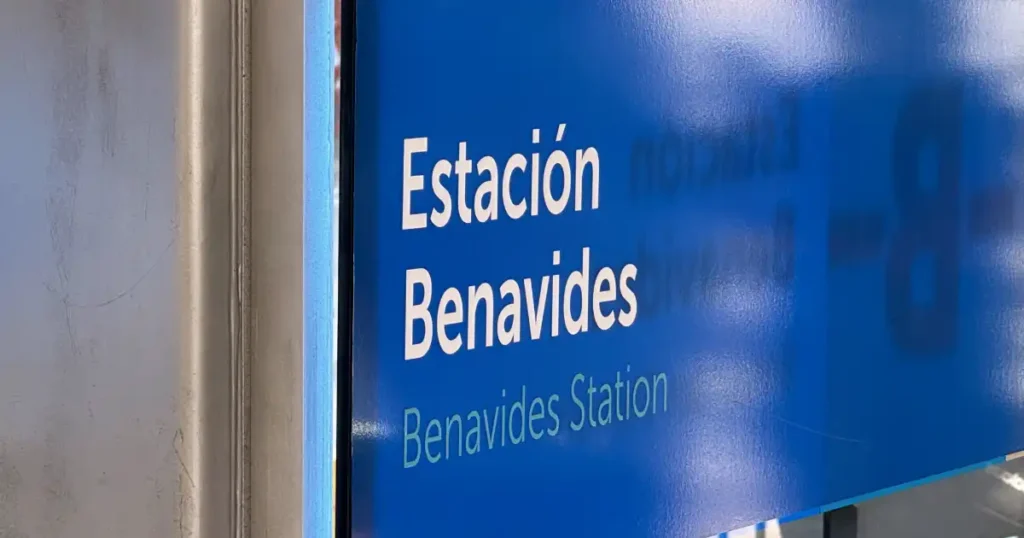
Transportation
Transportation in Lima was not only easy but incredibly affordable. Our total spend of $473.80 included everything from flights and airport transfers to public transit and bike rentals.
The most significant chunk of this category was our $414 flight from Santiago to Lima. That included one carry-on, checked bag, and seat selection—no surprises, just the typical fare for a regional LATAM flight.
Upon landing, we took an Uber from the airport to our Airbnb for $15. It was a smooth, hassle-free ride and a much more relaxing option than navigating aggressive taxi drivers just outside the terminal.
Pro Tip: Uber pickups are located in the parking garage across from the main airport exit. It is easy to find and much calmer than the curbside chaos.
Once we settled in, we explored the city using public transportation, bike-sharing services, and Uber.
We purchased a Metropolitano card, which costs $14 per month (including the card and three reloads). The system was clean, reliable, and extremely budget-friendly. Please note: you’ll need the card to board, and cash fares are not accepted.
One of our favorite ways to get around was by bike. We signed up for a month-long Bike Lima plan, just $5.95 per person, giving us unlimited 30-minute rides. It was the perfect way to navigate the Malecón and neighborhoods like Miraflores and Barranco at our own pace.
We also took five Uber rides to dinner and other destinations throughout the city. Each cost just a few dollars, and we found the rides consistently safe and efficient.
Between the Metropolitano, Bike Lima, and rideshares, getting around Lima was flexible, convenient, and very cost-effective.
Suppose your adventures take you beyond a month in Lima, as ours did. We highly recommend considering a tour to experience all that Peru has to offer. We found that Peru Hop offered us an excellent opportunity to
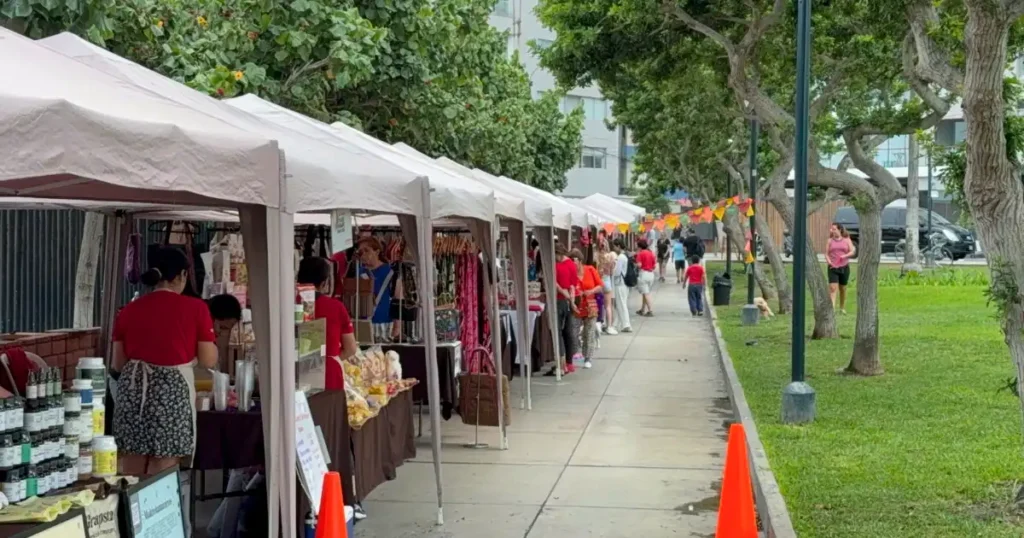
Shopping In Lima
We spent just $4.84 shopping in Lima this month, but that small purchase was a game-changer.
We picked up a set of plastic mason jar-style zippered baggies to store leftover salt, spices, coffee, and other pantry items we carry with us from one place to the next. These are lightweight, reusable, and perfectly sized for carry-on travel, with no bulky containers, leaks, or mess.
They’re a simple but innovative solution for keeping our nomadic kitchen organized. We’ve linked them in the description below if you want to check them out.
We didn’t do much traditional shopping and had no clothes or souvenirs. In Lima, import taxes make electronics, name-brand clothing, and tech gear significantly more expensive than back home, so we skipped those purchases and stuck to practical travel items.
We did visit Lacomer Mall, which sits right on the ocean and offers gorgeous views, especially at sunset. It’s home to international stores like H&M and Columbia, a well-stocked grocery store, and plenty of restaurants. It’s a fun spot to walk through, especially in the evenings when the area fills up with people coming to watch the sun go down.
But other than that, we kept our shopping light and our bags even lighter.
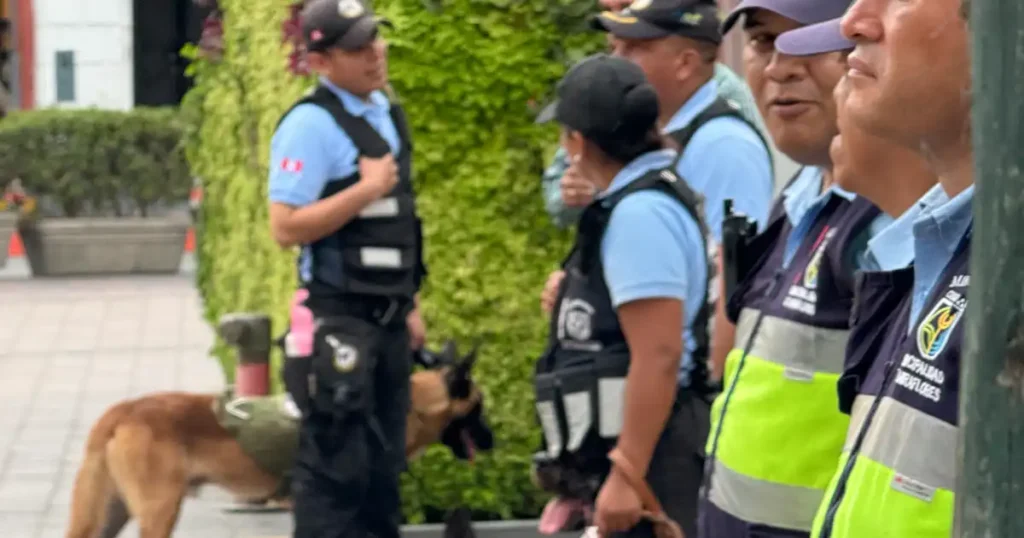
Safety in Lima, Peru
We spent a whole month in Lima and felt safe during our stay. However, like many large cities, Lima comes with a few safety considerations that you should keep in mind. While recent media reports have highlighted an uptick in crime, particularly in certain districts, it’s essential to note that Lima remains a city of nearly 10 million people, with both vibrant, welcoming neighborhoods and areas that require more caution.
We didn’t personally experience any safety issues, but we did take precautions and stayed informed, something we recommend for any traveler heading to a major city.
There are a few more specific concerns travelers should be aware of when visiting Lima:
Pickpocketing and petty theft – Especially common in crowded areas like Plaza de Armas, public buses, outdoor markets, and busy tourist zones. This is one of the most frequent issues for travelers.
Targeting of tourists – In some areas, travelers can be seen as easy targets for scams or theft. Being aware of your surroundings and avoiding flashing expensive items helps minimize risk.
We chose well-lit, central neighborhoods. We based ourselves in Barranco, a safe, walkable district with numerous restaurants, green spaces, and a strong police presence.
We used rideshare apps when needed – Uber was reliable, affordable, and gave us peace of mind, especially at night.
We kept our valuables secure – Meghan carries a cross-body bag with RFID and anti-theft features. Dan kept his phone on a lanyard and in an inner pocket, and we didn’t wear jewelry out and about.
We stayed updated – Following local news and alerts, as well as talking to other travelers, helped us stay informed about safety and protest concerns.

Our One-Month Lima Budget: What It Cost to Slow Travel in Peru’s Capital
Here’s our total cost for one month in Lima, and whether we think it’s a good destination for slow travel:
So, what did one month in Lima cost us?
We spent an entire month exploring Lima—its food, culture, neighborhoods, and coastline—and tracked every sol along the way. Our total for the month? $4,943.94 USD.
Here’s how that broke down:
| Category | Cost (USD) |
|---|---|
| Accommodations | $987.13 |
| Food & Drink | $2,822.86 |
| Groceries | $540.54 |
| Health & Wellness | $42.24 |
| Phone & Wi-Fi | $24.50 |
| Entertainment | $47.92 |
| Transportation | $473.80 |
| Shopping | $4.84 |
| Total | $4,943.94 |
That averages out to about $154.50 per day or $77.25 per person—including everything: our apartment in Barranco, delicious meals (from street carts to world-renowned tasting menus), bike rentals, museum visits, pharmacy runs, and even our flight into Lima from Santiago.
We know every traveler’s budget is different, and this reflects how we travel: slowly, comfortably, and with room to enjoy some incredible food experiences along the way.
Where We Explored
We took full advantage of Lima’s neighborhoods and walkable coastline. Here’s a highlight of the places we visited:
Miraflores
Parque del Amor & Faro La Marina – perfect for sunset views
Cat Park (Parque Raúl Barrenechea) – feline friends and shady benches
Malecón paths – biking and strolling above the cliffs
Miraflores beaches – surfing at Waikiki, sunbathing at Los Yuyos
Larcomar Mall – shopping, dining, oceanfront views
Inca Market & Mercado Artesanal – local crafts and souvenirs
Barranco
Puente de los Suspiros – charming bridge with local lore
Iglesia La Ermita – historic church with a crumbling beauty
Murals and plazas – colorful, artsy, and full of life
San Isidro
El Olivar Park – a tranquil green space with olive groves and koi ponds
Historic Downtown (Centro)
Plaza de Armas, Cathedral, Governor’s Palace
Pancho Fierro Art Gallery
Magical Water Circuit – nightly light and fountain show
Chinatown & Central Market – part of our food tour
Cultural & Archeological Sites
Huaca Pucllana – pre-Inca ruins in the middle of Miraflores
Huaca Huallamarca – lesser-known pyramid with a small museum
Where (and What) We Ate
From street food to Michelin-worthy tasting menus, Lima is a food lover’s dream. Here are a few of our standouts:
Sit-Down Restaurants
Kjolle, Mayta, Maido – iconic tasting menus that left us speechless
Isolina (Barranco) – homey Peruvian classics like causa and papa rellena
Selectos Ibéricos – tapas, sangria, and Spanish comfort food
Rincon Chami – regional specialties like Puka Puka Asada and picarones
Reiwa Izakaya – Japanese ramen and sake in the heart of Barranco
Gran Chifa Chung Yion – Chinese-Peruvian fusion in a bustling setting
Street Food & Markets
Picarones Mary – warm, spiced doughnuts served with syrup and a smile
Waikiki Market Vendors – quick bites and local snacks by the beach
Churrita Cart (Chinese Park) – fried dough perfection
Activities & Extras
Bike Lima App – $20 for a month of 30-minute rides
Parasailing Miraflores – yes, we soared over the cliffs!
Gran Hotel Bolívar – tried the cathedral Pisco Sour (legendary)
Food Tour – from Miraflores to Chinatown and historic Lima
Sunset walks, local parks, museums, and murals—many free or just a few soles
Final Thoughts
Lima turned out to be one of our most flavorful and affordable city stays in South America. It’s a city of contrasts, modern and ancient, laid-back and energetic, gourmet and grassroots, and we’re so glad we had time to soak it in slowly. Whether you’re budgeting big or small, Lima can meet you there.

